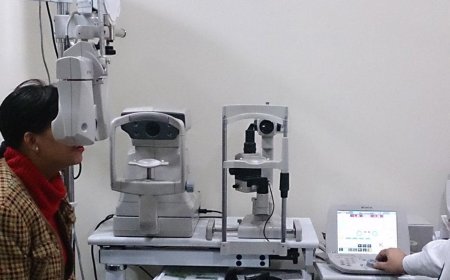Get To Know Essential Ingredients Must be Inside Your Dishwashing Liquid

Dishwashing liquid is one of the most common cleaning products in the market that enables a homeowner to keep the kitchen clean and hygienic. In a perfect world, every formula of dishwashing liquid that you use should be able to degrease, clean the dishes with ease, and get rid of the dirt, and the stuck-on food gently and effectively.
In this broad overview of dishwashing liquid formula, we are going to look at some of the essential components of dishwashing liquid as well as some of the most widespread brands that are available for purchase at the present moment and some green approaches to use in contemporary kitchens.
The dishwashing liquid first came into use in the early part of the twentieth century together with the first synthetic detergents. Since then, improvements in dishwashing liquid and dishwashing spray
have been more progressive and the formulation has increased in effectiveness, safety, and eco-friendliness. In the present days, different products are available in the market, of which, the best has numerous features such as enhanced grease removal, mild formulations for the skin, and organic solutions.
Essential ingredients for the preparation of a simple dishwashing liquid
The functional dishwashing liquid depends on the following four major components which are the basis of a proper dishwashing liquid mixture: The other components like thickening agents, stabilizing agents, and flavors and scents on the other part help in increasing the usage and popularity of the product.
- Primary Surfactant (Anionic Surfactant): The non-ionic surfactants are generally used with anionic surfactants that are Sodium Lauryl Sulfate (SLS) or Linear Alkylbenzene Sulfonate (LABSA), which offers prime cleaning assistance to the dishwashing liquid by softening dirt and grease from the dishes.
- Secondary Surfactant (Amphoteric or Nonionic Surfactant): An additional surfactant, Cocamidopropyl Betaine (CAPB) or Alcohol Ethoxylate (AE) provides additional cleaning and foaming. These “surfactants” also contribute to the stability of the foam and reduction of the mildness of the formula.
- pH Adjuster: Sodium Hydroxide or Citric acid is used to regulate the pH level of the dishwashing liquid and this is most preferably between pH 7 and 8. Here, it ensures that the cleaning performance is enhanced and at the same time reduces skin compatibility with the product.
- Water: Water is also an essential part of the dishwashing liquid and in this case, it is used as a solvent and a medium for the other ingredients. The water content in dishwashing liquid is normally from 65% to 90%. It aids in spreading out the surfactants, pH alternatives, and other extra parts in the liquid.
Technological and promotional enhancers
However, there are extra components that are normally used in the dishwashing liquid to enhance the effectiveness and come up with the selling points. These are substances that are incorporated into a product to give it properties other than its base formulation, to help meet consumers’ requirements.
- Enzymes: Protease, amylase, and lipase are enzyme that aids in the digestion of food particles, protein, starch, and fat residue respectively. The use of chemicals such as sodium hydroxide and civet, and their incorporation in dishwashing liquid provides better cleaning capacity to increase the ability to scour off strongly attached dirt off foods.
- Fragrances: The use of fragrances or rather essential oils in dishwashing liquids will make the dishwashing event or exercise more enjoyable for instance by changing the smell of the water. It is possible to use different fragrances to address different types of consumers; therefore, a range of options will be available, for instance, citrus, floral herby, etc.
- Dyes and Colorants: The use of colorants in the formulation of the dishwashing liquid can enhance the color and appearance of the liquid and this enhances the appearance of the product on the shelf since customers are able to distinguish it easily from other dishes washing liquids. The paints can also symbolize a particular appeal or constituent like green for an herbal fragrance or blue as a seawater fragrance.
- Chelating Agents: An example of a water softener is Ethylenediaminetetraacetic acid (EDTA) it acts as a chelating agent whereby it will adopt some of the metal ions which are in hard water and this reduces soap scum and enhances cleaning effectiveness. It also assists in minimizing deposits and residue on dishes and glassware so that they can be mostly clean.
- Grease-cutting Solvents: Extra grease- solvents including d-limonene or glycol ethers may be added to improve the effectiveness of the formula in cutting the greasy dirt. This is especially attractive to buyers who use lots of oils in their cooking or those who want a strong detergent for the crockery.
Conclusion
Using dishwashing liquid is an important affair for household members to thoroughly clean the utensils from dirt and remove the bad odor of food. As far as buying high-quality dishwashing liquid is concerned, you should be aware of its essential ingredients before laying your hands on the right product at the CognitionUAE platform.
What's Your Reaction?
















![Noots Focus Reviews [Truth Exposed 2025]!](https://news.bangboxonline.com/uploads/images/202501/image_430x256_678e3b94881a1.jpg)
![Vivalis Male Enhancement: The Must-Know Ingredients [2025 Update]](https://news.bangboxonline.com/uploads/images/202501/image_430x256_678e3b54e396c.jpg)











